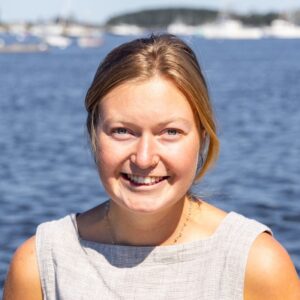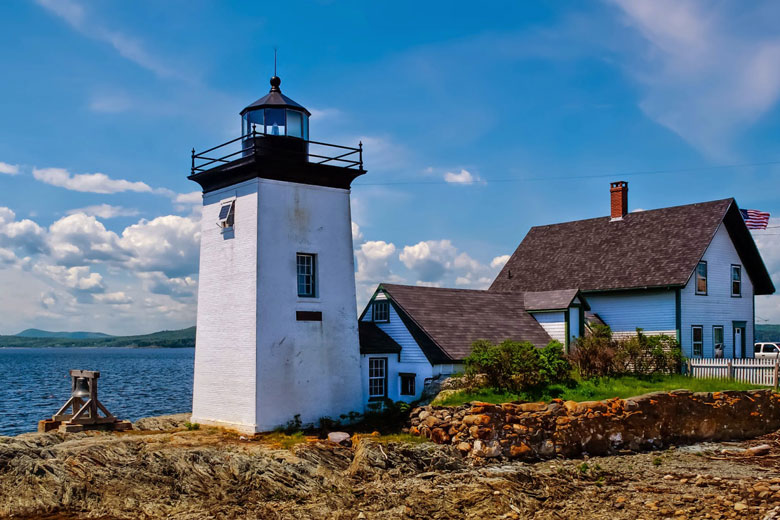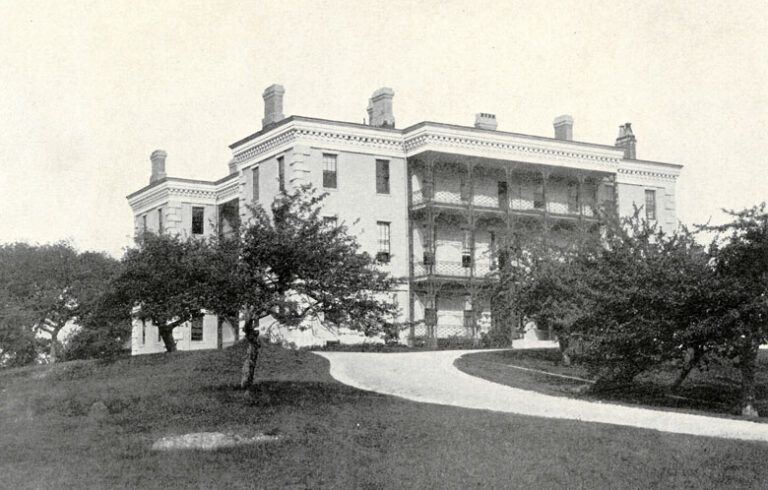Reflections is written by Island Fellows, recent college grads who do community service work on Maine islands and in coastal communities through the Island Institute, publisher of The Working Waterfront.
At some point during my final summer of living on Islesboro, the thought of how to say goodbye trickled in.
At first, I let it exist only in conversation:
“You must be finishing up the Fellowship soon,” people said to me in line at the general store. “When are you heading off?”
“End of the summer” I replied, taking the question in stride. “I’ve still got plenty of time.”
When saying goodbye to an island, denial, as with grief, is always the first step.
In June, I took to leaving my car on the mainland and committed to riding my bike everywhere. I did so partly to cut down on the expense of peak-season ferry tickets and partly in search of a new perspective.
Biking became my solace as it made the island wild to me once again. My commutes took longer, but at my slowed pace, I had time to notice new details—the dirt roads I didn’t know connected and the coves that lay hidden beyond them.
With less than 12 weeks left on the island, biking became my solace as it made the island wild to me once again.
Everything became highly visible, softened through my lens of impermanence. I saw the red-winged blackbirds swinging in the cattails and the patches of erosion inching closer below them.
July wrapped itself up quickly, as I worked with the members of the sea level rise committee to make a smooth transition away from my work. I tucked all that I had produced during my tenure—articles, documents, graphic timelines, website content—into a portfolio, like all of the Fellows who came before me. I attended my final committee meetings and signed out of town accounts.

Saying goodbye was written into my work.
It is hard to remember now how, at the beginning, living alone on an island for two years felt like a major contract to sign.
At that point, the data was oversimplified: two falls, two winters, two springs, two summers; 730 days, 104 weeks, 3 miles offshore.
The way I look at it now, I see my fellowship not as a contained experience of living and working with an island community, but as a way of thinking that has shaped how I will forever seek connection to a place.
I take stock of the lessons I learned from the island and assess how to carry them forward. I am leaving this position with a wealth of knowledge about municipal governance, narrative building, state resources, grant funding, and experience working on a local climate adaptation project.
While I spent a lot of time looking at flood maps and talking about the threat that climate change poses to current infrastructure, I also had the opportunity to engage in conversations about what we want the future of this place to look like. The process of re-imaging what is possible and working in community to solve local issues has restored a sense of hope in me.
By the time August snuck up with its foggy mornings and cool nights, even the long, slow ferry lines whittled me down into something nostalgic. I leaned against the hood of my friend’s car, hot in the afternoon sun, and we chatted while we waited for the boat.
“How much longer are you around, Liv?” my friend asked.
“Until the end of the month,” I said, “and then I’ll be gone.” But as the words leave me, I know they are not true. This will always be a place I return to, in some way or another.
And, in the end, that is how I said goodbye to the island: “See you later, Islesboro.”
Olivia “Liv” Lenfestey worked with Islesboro’s Grindle Point Lighthouse Museum and the town’s sea level rise committee. She grew up in Santa Fe, N.M.





